State the matrix product to obtain 3 linear combinations of vectors
with scaling coefficients , , .
Solution. The matrix product is , (3 linear combinations, each with 3 components), (vectors entering into linear combination), (scaling coefficients of each linear combination)
Orthonormalize the vectors
Solution. Note that , such that these vector pairs are already orthogonal. Also note that the vector is orthogonal to both and . Scale vectors to have unit norm
For , expansion of leads to . Find the corresponding expansion of for .
Solution. Compute, recalling that matrix multiplication is not commutative
Find the projection of onto for
Solution. With note that , hence , and the projection of onto is itself.
Alternatively, orthonormalize to obtain
The projection onto is
Find the decomposition of
Solution. Carry out reduction to upper triangular form, noting multipliers used in the process
Find . Compute
Verify
State the eigenvalues and eigenvectors of , the matrix describing reflection across the vector .
Solution. From eigenvalue relation note that directions not changed by reflection are along and orthogonal to . Deduce
Compute the eigendecomposition of
Solution. Eigenvalue problem is . Observe that , is an eigenvector, value pair. Compute characteristic polynomial by
The other eigevalues are , . Find eigenvectors by computing bases for eigenspaces and .
Find the SVD of
Solution. Matrix has orthogonal columns that are not of unit norm. Construct SVD as
Find the matrix of the reflection of vectors across the vector .
Solution. Let be the reflection of across , . Let
The projection of onto the direction of is . The travel from to is
The reflection is obtained by doubling the travel distance
Deduce that the reflection matrix is
Find bases for the four fundamental spaces of
Solution. With , the bases are:
:
: since is orthogonal to both and
:
:
